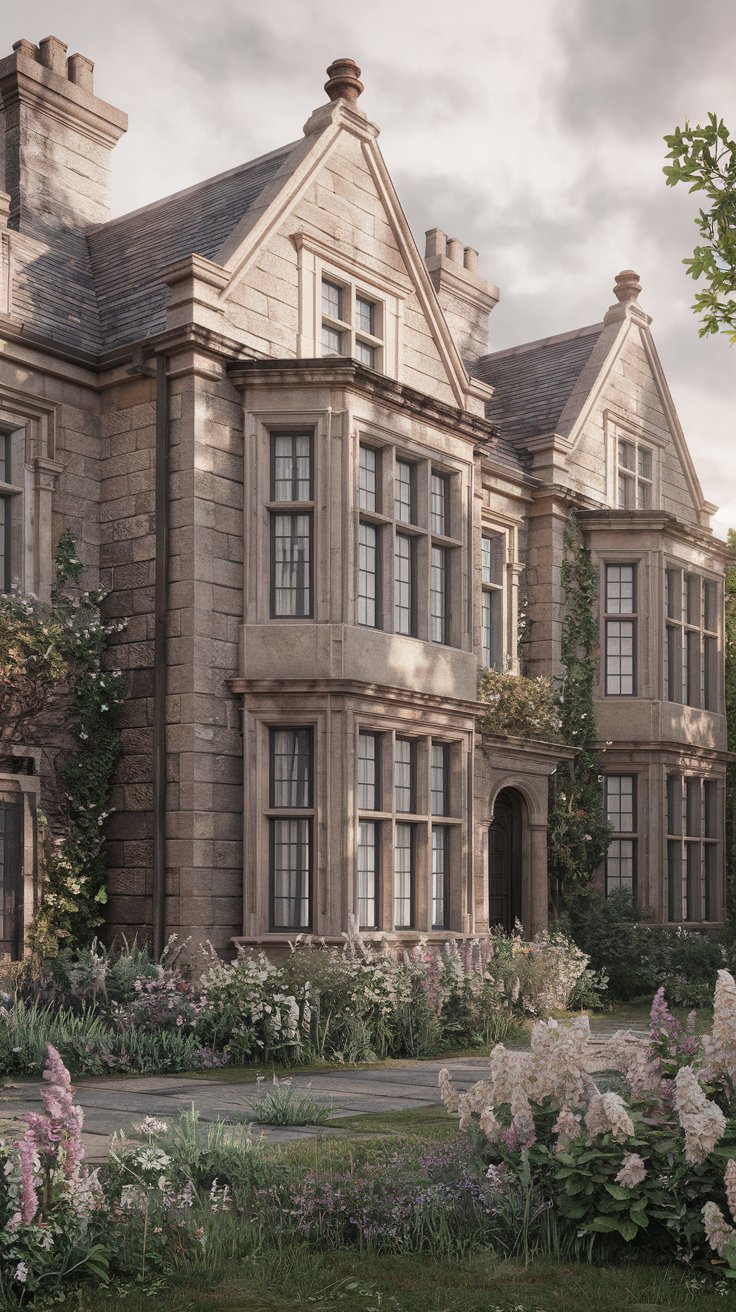type
status
date
category
slug
summary
Pinterest Topic
Pin Title
Pinterest Tag
Facebook Post
Latest Pin Date
Latest Pin No.
Pin Image
Total Pin Images
All Pins Posted
All Pin Images Created
tags
icon
password
comment
humanize
Let’s go back. Way, way back, into history.
Not the textbook kind. The kind where you scribble notes so fast your hand hurts. You stare at the clock, waiting for the bell to get you out of that desk.
This history stays with you. Like the smell of your grandma’s kitchen after she bakes chocolate chip cookies. The ones with extra chips—she knows you sneak one before dinner. It’s still warm, crumbs on your shirt. You pretend you didn’t when she raises an eyebrow.
Or the feel of that old sweater she knitted for you. It’s soft, a little bumpy. You can smell her lavender detergent, faint. And it fits like a hug when it rains.
The kind you stumble on when you’re walking down a quiet road, not even looking for anything, and suddenly stop. Your feet just freeze. You don’t know why at first—maybe it’s the light, or a feeling in your chest. But then it hits you: this old stone house? It’s not just walls. It’s a storage bin for stories. Hundreds of them. Like how your grandma tucks her best tales into that chipped cookie jar on the counter—saving them for someone who’ll actually lean in, eyes wide, and listen instead of checking their phone.
These aren’t “dwellings.” They’re quiet storytellers. Every rough stone? It’s whispering. About the kid who tripped on the doorstep, scraped their knee raw, and tried to hide it from mom (we’ve all been there—shoving a sock over the scrape like that’ll make it disappear, even though the blood soaks through five minutes later). The couple who laughed so hard over burnt toast they didn’t even care the smoke alarm was beeping, because they were too busy staring at each other like the other person hung the moon. The family that huddled inside during a storm, telling such bad jokes the thunder sounded like it was groaning along—my uncle tells the same ones, by the way. They still aren’t funny.
I’ll be honest—I’ve always been a little obsessed with them. There’s something about how stone ages: edges softening like worn-in jeans (the ones you refuse to throw away even when the knees are holey), moss creeping in like a secret shared only with the earth, but never losing that steady, unshakable strength. It feels like history tapping your shoulder, gentle but firm, saying, “Hey. Slow down. I’ve got something to tell you.”
So let’s wander together, okay? Let’s check out ten of these enchanting historic stone houses—each one’ll make you want to grab a jacket (even if it’s 75 degrees out, just for the vibe; trust me, I’ve been that person—walked around a Tuscan village sweating in a cardigan because I thought “it’s Europe, I need layers”) a crumpled map (the kind that gets softer with use, creases worn thin from being folded and unfolded a hundred times in your bag, coffee stains on the corners), and that sense of wonder you had when you were a kid. The one where you believed every house had a fairy in the attic, or a ghost that left candy under your pillow (I swear I found a lollipop once—my mom said it was “just the cat,” but I knew better. The cat hated cherry flavor).
They’ll transport you. I promise. You’ll finish this and want to book a train ticket—don’t say I didn’t warn you.
1. The Mystical Cottage of Cotswolds, England
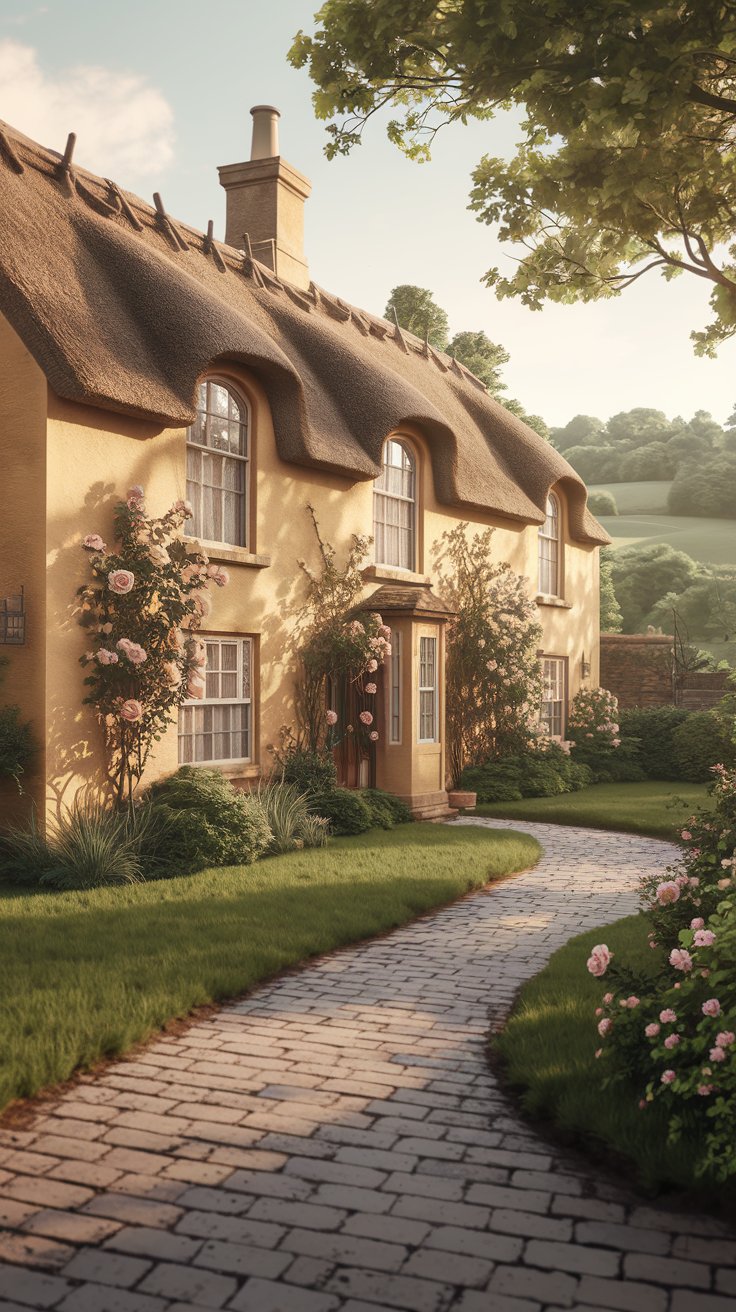
Picture this: You’re driving down a narrow English lane, hedges so tall they brush the car windows like old friends leaning in to say hello. You’re probably listening to some soft folk music—something with a fiddle, the kind that makes you tap your foot without realizing it, even if you’re stuck behind a tractor going 10 mph—and then… boom. There it is.
A little stone cottage that looks like it stepped straight out of the fairytale you begged your mom to read every night before bed. The one with the happy ending, obviously. No dragons here—just warmth.
These Cotswold cottages don’t try to be fancy. They’re just… there. Like they grew right out of the ground, no fanfare, no “look at me.” The stone? It’s that warm honey color that glows at golden hour—so bright you swear it’s almost luminous, like someone turned on a soft light from the inside just to make you smile. The roofs are thatched, soft and fuzzy, like a giant teddy bear’s fur that’s been loved for years (the kind you drag to bed with you even when you’re “too old” for stuffed animals—my sister still has hers, named Mr. Fluff, and she’s 32).
And the walls? Covered in climbing roses—pale pink, the kind that smells like summer, pure and simple. I leaned in once to sniff one, and I swear I could almost taste lemonade and sunscreen, like a memory from when I was seven and spent every day at the park. My grandma would pack a cooler with lemonade in those glass jars with metal lids, and I’d spill half of it on my shirt before lunch—sticky, sweet, and perfect. That’s the kind of feeling those roses give you—nostalgia that wraps around you like a blanket.
I stood outside one of these cottages for way too long—like, long enough that I started worrying the owner would peek out and think I was a weirdo. But then a little old lady walked out with a watering can (her hands spotted with age, nails clean but worn down, like she’d spent a lifetime tending to things) and smiled. Her watering can had a chipped spout, and she didn’t even bother wiping the dirt off her apron—there was a smudge right on the front, like she’d wiped her hand there without thinking. She offered me a sip of tea from a chipped mug, too—earl grey, with a little too much sugar, and it was the best thing I’d had all day.
“Been in the family 150 years, love,” she said. Can you even wrap your head around that? 150 years of birthdays (with lopsided cakes, I’m sure—my grandma’s cakes were never straight either; she’d say “character” instead of “mistake”), rainy days where everyone stayed inside and played board games (Monopoly, usually, and someone always cried over the hotels—my cousin once threw the dog token across the room), Sunday dinners that lasted three hours because no one wanted to leave the table. That’s not a house. That’s a legacy, baked into stone.
Life here feels slow—in the best way. No rush, no noise, just the quiet rhythm of rural England that’s been going on for centuries. To look at one of these cottages is to feel calm, instantly. Like you could sit on that cobblestone path all afternoon, watching bees buzz from rose to rose, and the world wouldn’t mind. Not one bit. I almost did, honestly… but then I remembered I had a train to catch. Still, I think about that path sometimes—how the stones felt under my shoes, cool even in the sun, like they were holding onto the morning dew just for me.
2. The Rugged Farmhouse of Tuscany, Italy
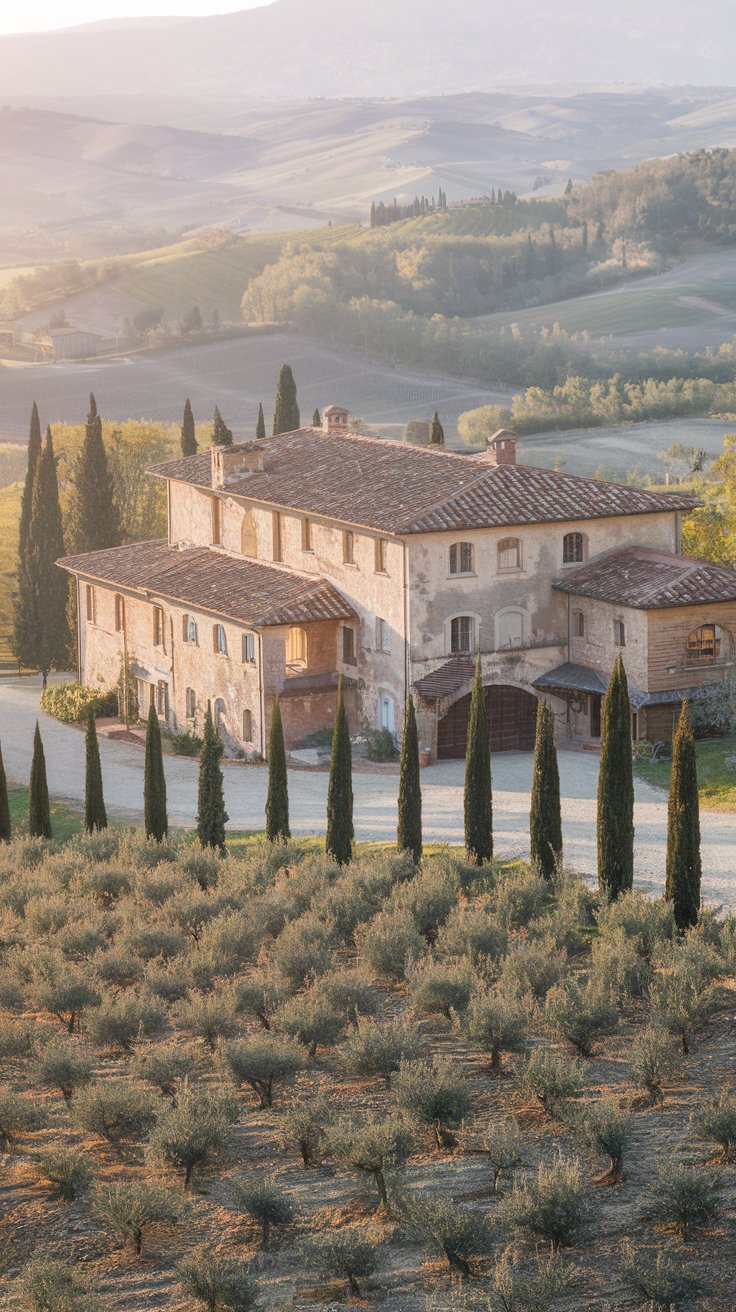
Tuscany’s stone farmhouses are the definition of “no frills, all heart.” They’re built solid, like they know they’ve got to stand up to hot summers where the sun beats down so hard the ground cracks (you can see little fissures in the dirt, like the earth’s yawning) and cool winters where the mist hangs low for days (so thick you can barely see the end of the driveway—my GPS gave up, honestly. I had to ask a goat herder for directions).
The stone? Local stuff, baked by the sun so long it feels warm to the touch—even on a crisp morning when your breath puffs out like smoke, and you’re glad you remembered your scarf (mine was a scratchy wool one, the kind that itches your neck a little, but I didn’t care. It was a souvenir from Rome, and I was determined to wear it).
I visited one last year, and let me tell you: The second I turned down the gravel driveway (lined with cypress trees that stand straight like old friends—quiet, reliable, never letting you down), I smelled it. Woodsmoke from the fireplace, rich and earthy, like someone’s been burning pine logs all morning. And fresh bread—still warm, crusty on the outside, soft and steamy inside—drifting through an open window.
My stomach growled before I even saw the house. Embarrassing, but true. I tried to hide it by clearing my throat, loud, but let’s be real—everyone heard. The dog tied to the porch even looked over at me like, “Same, buddy.” He was a golden retriever mix, with a white patch on his chest, and he wagged his tail so hard his whole body shook.
The farmer’s wife, Signora Maria, heard the car and waved me in. Her apron was flour-dusted (like she’d been baking since dawn—there was a streak on her cheek, too, and I wanted to tell her, but didn’t want to be rude), her hair tied back in a red scarf that popped against her dark hair, and she handed me a slice of bread slathered with olive oil from the grove out front. She gestured to the trees, saying her grandfather planted them in 1952—“best olives in Tuscany,” she said, and I didn’t argue.
That oil? Nothing like the stuff from the grocery store—thin, bland, forgettable. This was bright and green, tasting like grass and sun and the Tuscan soil. I ate two slices before I could say “grazie.” Crumbs fell on my shirt, and she laughed and shook her head, like she’d seen it a hundred times. “Hungry, eh?” she said, and I nodded, cheeks hot. She gave me a third slice, just because.
I forgot to ask her for the bread recipe. Still kick myself for that—though I’ve tried to replicate it at home. Spoiler: It’s not the same. I think it’s the flour? Or maybe the fact that I don’t have a stone oven, or Signora Maria’s magic touch. Probably the magic touch.
These farmhouses have seen generations. Kids chasing chickens in the yard (I saw a toddler do that, actually—she was laughing so hard she tripped, then got right back up, covered in dirt, and kept going like nothing happened; her mom called her “wild thing” and shook her head, but she was smiling), families gathering for harvest dinners where the table’s loaded with tomatoes and pasta and wine (the kind that stains your lips red—my shirt still has a spot from that night), grandmothers hanging laundry on the line that flaps in the breeze like colorful flags (I saw a pair of tiny overalls, bright blue—made my heart ache a little, thinking of my niece).
The stone walls are weathered, sure—there are scratches from years of moving crates, stains from rain that won’t wash away—but that’s part of the charm. Each mark is a memory. They’re not pretty in a “perfect” way. They’re pretty in a “lived-in, loved, this is real life” way. And that’s way better.
3. The Grand Manor of Loire Valley, France
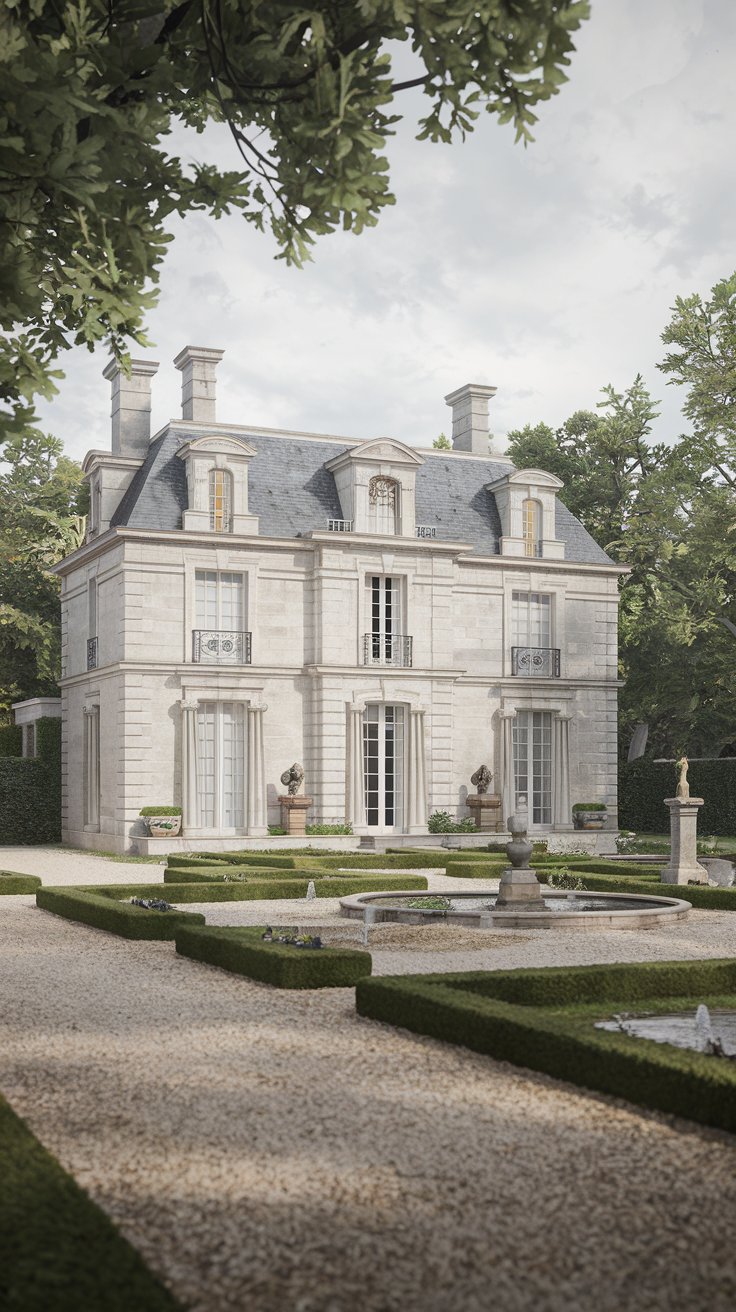
The Loire Valley is where stone houses stop being “houses” and start being “manors”—grand, elegant, like they know they’re part of something important. Think ballgowns and chandeliers, but made of stone. No frills, but every line feels intentional, like a painting someone spent years on (the kind you stand in front of at a museum and go, “How did they do that?” while your friend checks their watch).
I walked through one’s gardens on an overcast day (which, honestly, made the light grey stone look even more sophisticated—like it was wearing a tailored suit, no wrinkles, no mistakes). My hair got a little frizzy from the humidity, but I didn’t care. I just… stared.
The slate roof was sharp against the cloudy sky, the French windows tall and thin, letting in soft light even on a gloomy day. And the gardens? Perfectly trimmed hedges (so neat they looked like they’d been cut with scissors—my mom would’ve cried; she can’t even keep a houseplant alive), fountains that gurgled softly (like they were whispering secrets, too quiet to hear but you know they’re there), gravel paths that crunched under my shoes in a way that felt satisfying—like popping bubble wrap for your ears. I found myself stepping a little heavier just to hear it again.
I half expected a butler to pop out with a tray of tea, all polite and formal, saying “Madame, your chamomile.” But no one did. Just me and the quiet. It was nice—no phones, no emails, just the sound of the fountain and the wind in the trees. I even put my phone on airplane mode, which felt like a rebellion.
These manors are symbols of French aristocracy—of fancy parties where violins played until midnight (I could almost see the couples dancing, dresses swirling, men in tailcoats stepping on toes), of kings and queens stopping by for a meal (can you imagine? Eating in that dining room, silverware polished to a shine so bright it hurts your eyes, and you’re too nervous to ask for more bread), of centuries of culture seeping into the stone.
But here’s the thing: They don’t feel stuffy. Stand there long enough, and you can almost hear the music from old balls, faint but clear, like a memory floating on the wind. Or the laughter of nobles sitting on the terrace with glasses of wine, talking about art and politics and the weather (because even nobles complain about rain—some things are universal). The stone walls feel like they’re holding onto all that glamour, gently, like a secret they’re happy to share if you’re willing to listen.
I sat on a stone bench for a while, watching a bird hop across the fountain. It was a sparrow, with a little tuft of brown feathers on its head, and it kept dipping its beak in the water like it was sipping wine. It felt like time slowed down. Like I was part of something bigger than my to-do list, my emails, my usual chaos of “I need to do this, I need to do that.” That’s the magic of this place—it makes you feel small, but in a good way. Like you’re touching a piece of history that matters. Not the kind you read about in books, but the kind you feel.
I stayed until a light rain started, and even then, I didn’t want to leave. I pulled my jacket up over my head and stood there a little longer, watching the raindrops hit the fountain. It was worth getting a little wet. My jacket still smells like rain and jasmine, actually. I keep it in the closet just for that.
4. The Resilient Homestead of Pennsylvania, USA
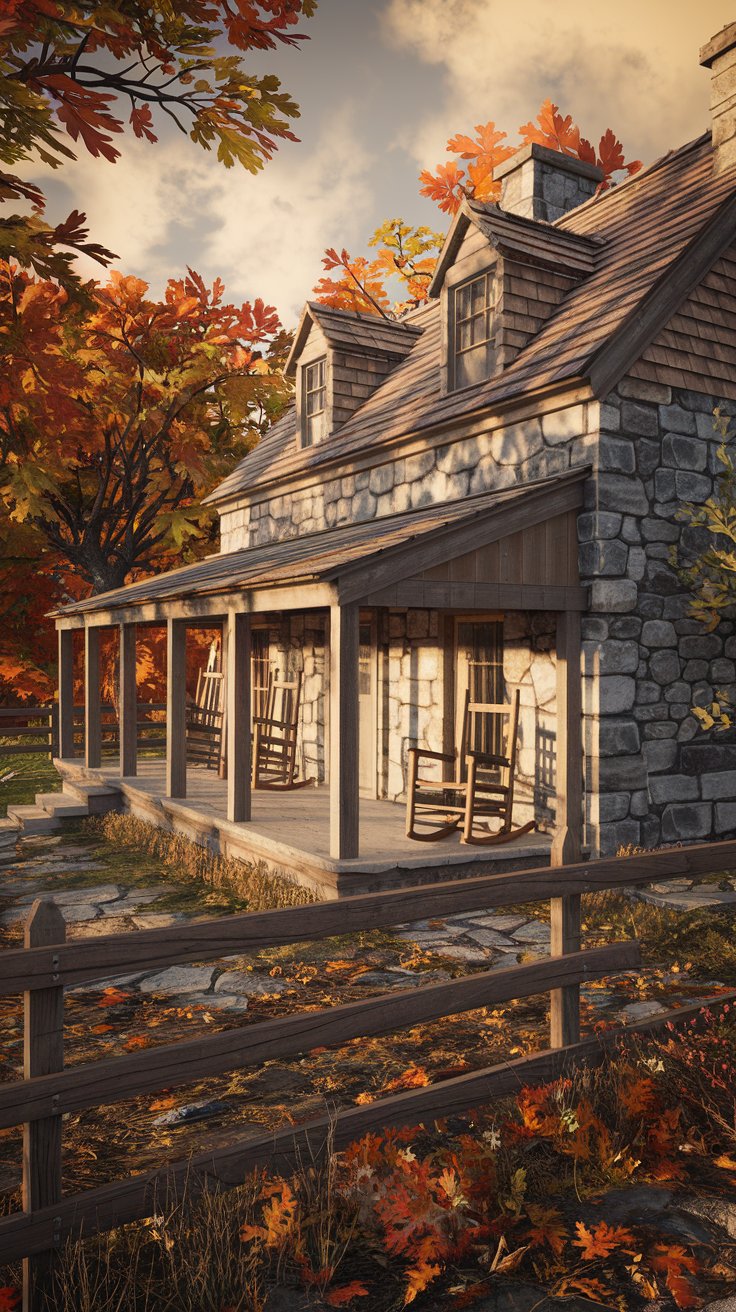
Pennsylvania’s stone homesteads aren’t about glamour. They’re about grit. About early American settlers looking at the land, grabbing whatever stones they could find in the fields (rocks that had been there for thousands of years, just waiting to be used), and building a roof over their heads—no matter what the weather threw at them.
Snowstorms that buried the doors (you’d have to dig your way out in the morning, shovel in hand, breath fogging the air), heatwaves that made the air thick enough to chew (you’d sit on the porch with a glass of iced tea and sweat through your shirt—my dad still does that, even with AC), rain that lasted for days and turned the yard to mud (the kids would splash in it anyway, much to their mom’s dismay—my brother and I did that once, and we got grounded for a week)? These houses laughed it off. They’re the definition of “tough as nails.”
I saw one last autumn, when the leaves were turning red and gold and orange, like someone spilled a paint box over the woods. The fieldstone walls looked like they were made of rainbows—all those earthy browns and grays and even hints of red mixed together, no two stones the same. It reminded me of my dad, who used to build fire pits out of fieldstone in our backyard when I was a kid. He’d spend hours picking out the right rocks, fitting them together like a puzzle, his hands covered in dirt. “Stone’s honest,” he’d say, wiping dirt off his jeans with the back of his hand. “It doesn’t pretend to be something it’s not. It just is.”
That stuck with me. Looking at that homestead, I thought, “Yeah. Dad was right.” I reached out and ran my hand over the wall—rough, uneven, but solid. It felt like shaking hands with the past. Like the settlers were there, standing next to me, saying “we did this.”
There was a covered porch with two wooden rocking chairs—one had a small scratch, like a kid had carved their initials in the arm (I leaned in to check, but the wood was too worn to tell if it was a “J” or a “K”—maybe both). The other had a loose slat, but it still rocked just fine, creaking a little like it was humming. The porch floor creaked too when I stepped on it, like it was saying “hello.” I sat in one of the chairs for a minute, and it felt like it was holding me—steady, warm, like an old friend.
I could almost see an old farmer sitting there, sipping black coffee from a chipped mug, watching the sun come up over the woods. Maybe he was thinking about the crops—hoping they’d grow, hoping the rain would come. Or maybe he was just thinking about how quiet the morning was, and how nice that was. I’ve had those mornings, too—sitting on my own porch, not thinking about anything, just breathing. They’re the best kind.
These houses are tough. They’ve survived so much, and they still stand. The stone feels like a hug from the past—like the settlers are saying, “We made it, and so can you.” They’re not fancy. But they’re true. And that’s what makes them special. You don’t just see a house. You see resilience. You see people who refused to give up, even when things were hard. That’s a lesson we could all use, right? Especially on the days when everything feels like it’s falling apart.
5. The Stately Mansion of Scotland
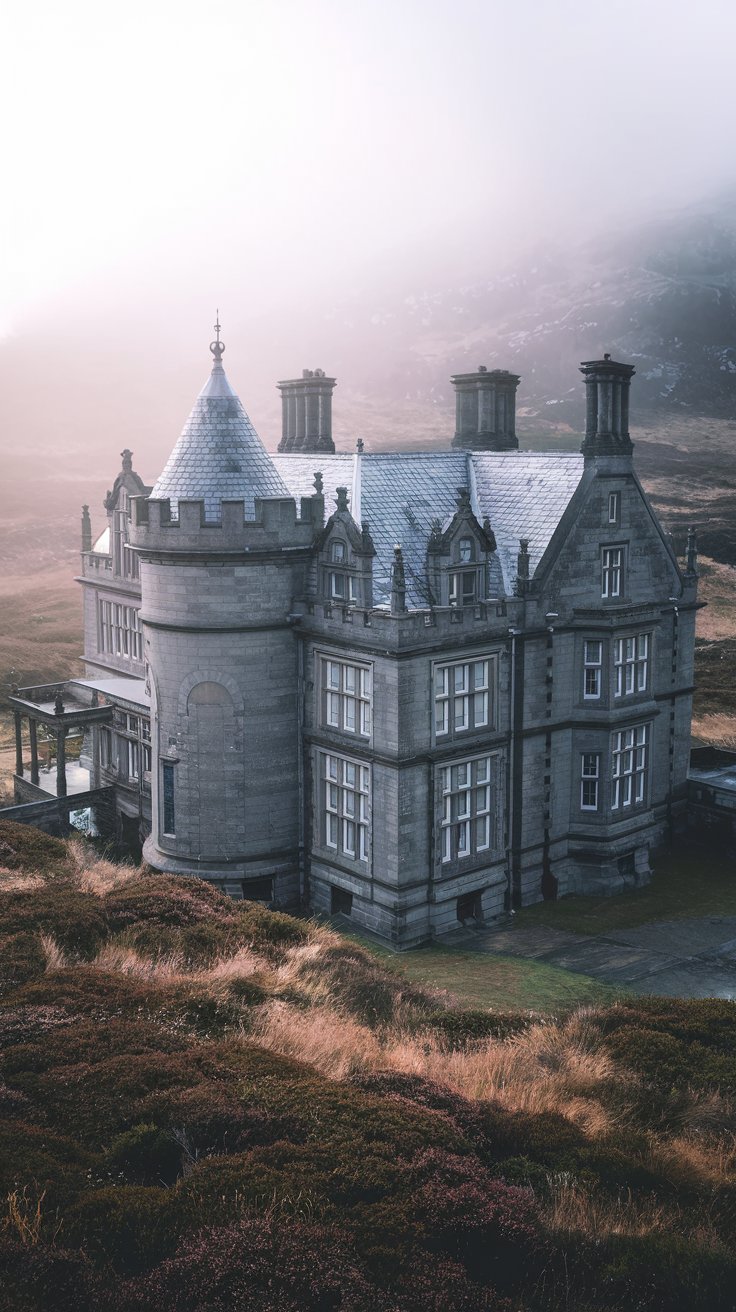
Scotland’s stone mansions are dramatic. Like, “straight out of a fantasy novel where dragons might live in the basement (but let’s be real, they’re probably just really cool cellars with old wine)” dramatic. They’re not just houses—they’re statements. Bold, unapologetic, and a little mysterious.
I visited one on a misty morning—fog so thick you could barely see the turrets (those little tower bits that make it look like a castle) at first. It was like the house was playing hide-and-seek, teasing me: “Come find me.” The mist felt cool on my cheeks, like a soft splash of water. I had to rub my eyes a few times to make sure I wasn’t imagining things.
Note to self: Always bring a jacket to Scotland. I thought a light cardigan would work. Spoiler: It didn’t. My hands were freezing, so I tucked them into my sleeves like a kid. My cardigan got damp, too, and I kept sniffling, but I didn’t want to leave. I was too curious—too eager to see the house reveal itself. A local walked by and handed me a spare scarf—wool, plaid, and scratchy, but it kept me warm. I tried to give it back, but he waved me off, saying “it’s just sitting in my car.” I still have it, folded in my travel bag.
The granite walls are dark grey, almost black, and they blend right into the rugged terrain around them—like they grew out of the hills, not just built on top. Heather grows wild at the edges, purple and soft, and when the wind blows, it sways like it’s dancing to a song only it can hear. I reached down to touch it once—it was softer than I expected, like velvet. I plucked a tiny sprig and tucked it into my pocket. It’s still there, pressed flat in my travel journal, next to a ticket stub from the train ride to Edinburgh and a napkin from a café that served the best shortbread I’ve ever had.
These mansions were built to last—against harsh Scottish winters where snow piles up to the windows, against history itself. They’re full of clan stories: of battles fought nearby (I wondered if the stones could still hear the swords clashing, the shouts of soldiers), of feasts that lasted for days (tables loaded with haggis and ale and bread, people singing so loud the rafters shook—my cousin’s wedding was like that, minus the haggis), of families sticking together when times got tough.
I stood there, hands still in my sleeves, and suddenly I heard bagpipes in the distance. Not the touristy kind, the kind that’s too loud and fake. The real kind—raw, emotional, like the music’s crying. Some local farmer, playing just because. Not for money, not for attention. Just because the mist felt like the right time for music.
It gave me chills. Not the cold kind, but the kind you get when something feels meant to be. Like the mansion was finally letting me in on its secrets, one note at a time. I stayed longer than I planned, watching the mist lift little by little, until the turrets finally peeked through. It was worth the wait. Like waiting for the sun to come out after a storm—you forget how long you stood there once you see the light.
6. The Charming Village House of Santorini, Greece

Santorini’s famous for its bright white houses and blue domes—you’ve seen the postcards, the ones that make you scroll back and go “wait, is that real?” Spoiler: It is. But the stone houses? They’re the quiet stars of the show. The ones that hold the island’s heart, even when the tourists are taking selfies outside the domes (I may have taken one too—no shame; it’s now my phone background, and my mom texts me every time she sees it, saying “when are you bringing me?”).
These houses are built from volcanic stone—hard, dark, full of the island’s history (Santorini was once a volcano, after all—can you imagine? The ground shaking, lava flowing… and then, years later, people building homes from the very rock that once destroyed everything). Most are whitewashed, but if you look close, you can see the stone peeking through—like the island’s not quite ready to hide its true self.
I picked up a small loose piece once (don’t worry, it was already on the ground—didn’t want to damage anything!) and stuck it in my pocket. Now it’s on my windowsill at home, next to a seashell I found on the beach. It still has a little whitewash on it, and when the sun hits it, it glows like a tiny piece of Santorini.
I sat on a balcony of one of these houses once, watching the sunset over the Aegean Sea. The stone under my hands was still warm from the day’s sun. It felt like hugging the island—like it was sharing its warmth with me, not wanting me to get cold when the wind picked up. The sunset was insane—pinks and oranges and purples bleeding into the water, like someone poured a paint bucket over the sky. I stayed so long I missed the time I planned to head back to my hotel, but I didn’t care. Some moments are worth being late for. A waiter from the café below brought me a glass of wine—free, just because “the sunset’s better with company.” I didn’t understand his name, but I nodded and said “efharisto” until he laughed.
The blue shutters and doors pop against the white—bright, happy, like someone painted them with joy. No muted tones here. Just bold, unapologetic color. Bougainvillea climbs the walls—hot pink and bright purple, like someone spilled a paint box and decided to leave it, because why not? It looks perfect. I took a photo, but it didn’t capture it. You had to be there—feel the sun on your face (hot, but not too hot, thanks to the breeze), smell the salt in the air (sharp, clean, like the ocean’s washing your lungs), hear the waves crash below (soft, steady, like a lullaby). I closed my eyes for a second and almost fell asleep.
Life here is slow: fishermen coming in at dawn with their nets (their hands calloused, their boats bobbing in the water like toys), kids chasing each other through the narrow streets (they were playing tag, I think—their laughter echoed off the stone walls, loud and happy), old men sitting in cafes drinking coffee, talking loud and fast in Greek (I didn’t understand a word, but their smiles said it all—they were telling a good story, probably about the time they caught a fish “this big”). These stone houses aren’t just homes. They’re part of Santorini’s soul. You can feel it the second you step inside—warm, welcoming, like you’ve been here before, even if you haven’t.
I left with sand in my shoes and a sunburn on my nose. Worth it. Every bit. The sand’s still in my suitcase, actually. I can’t bring myself to dump it out.
7. The Robust Fortress of Dubrovnik, Croatia
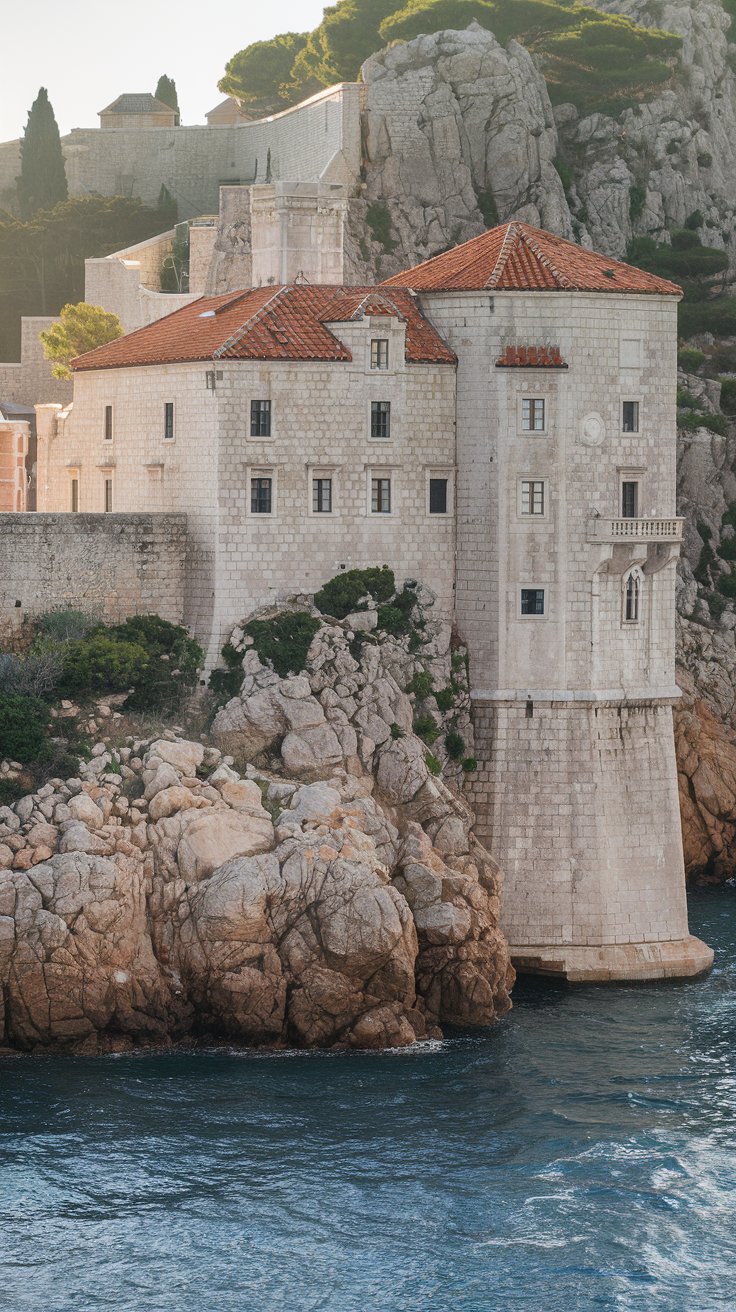
Dubrovnik’s stone houses aren’t just homes. They’re fortresses. Built to protect the city from invaders, from the sea (which can be calm one day and furious the next—waves crashing against the cliffs like they’re trying to break through), from whatever came next. They’re tough, like the people who live there—resilient, proud, not easily shaken.
I walked along Dubrovnik’s old city walls one sunny morning—those massive stone walls that wrap around the whole town, like a giant hug that won’t let go. My legs got tired halfway through (note to self: wear better shoes next time. Flip-flops were a bad idea. My feet hurt so bad I had to stop and rub them every ten minutes, and a group of tourists laughed at me—rude, but fair). But I didn’t care. I looked down at these houses, perched on cliffs overlooking the Adriatic Sea (which is so blue it hurts your eyes, I swear—like someone mixed up all the best blues—sky blue, navy, turquoise—and poured them into the ocean).
The limestone walls are thick (thicker than my arm, I bet), the windows tiny (so enemies couldn’t climb in, smart—whoever designed these knew what they were doing), and the terracotta roofs glow in the sun—warm, like they’re smiling down at the sea.
No wonder this place is called “the Pearl of the Adriatic.” It’s shiny, precious, and tough as nails. You can’t help but stare. I stopped to talk to a local fisherman who was mending his net on the wall. He had a scar on his cheek, and when he smiled, it crinkled, making him look kind. He pointed down at one of the houses and said, “My grandpa lived there. He was a sailor, too.” He handed me a piece of dried fish—salty, chewy, and surprisingly good. I ate it even though I’m not a big fish person.
He told me stories about his grandpa coming home from long voyages, bringing back candy for the kids (the kind that melts in your mouth, he said—strawberry flavor, his favorite) and stories of far-off ports (places with names I couldn’t pronounce, but sounded magical—like “Zadar” and “Split”). I could almost see it—the old sailor waving from his boat, the family waiting on the shore, kids jumping up and down, yelling “deda! deda!” (grandpa, grandpa!).
These houses have seen a lot: sailors coming home from long voyages, merchants selling goods in the squares (olives, wine, cloth that felt soft as silk— I bought a scarf, and it’s the softest thing I own), even wars. But they’re still standing. Strong. Steady. I leaned against the stone wall, and it was cool even in the sun—like it’s been holding onto the sea breeze for centuries, saving it for hot days like this.
Stand there long enough, and you can almost hear the old sailors calling to each other from the harbor, their voices loud and rough from the wind. Or the clink of glasses in a tavern below, people laughing and telling stories. It’s history you can almost touch. I closed my eyes for a second, and I swear I felt it—the buzz of a busy port, the laughter of people happy to be home, the smell of fresh fish being cooked. It was like stepping back in time, just for a minute.
8. The Cozy Cabin of the Appalachian Mountains, USA

Winter in the Appalachian Mountains is quiet. Snow covers everything, hushing the world—no birds chirping, no cars honking, just the soft crunch of snow under your boots when you walk. A stone cabin there? It’s like a warm hug in the middle of the cold. You see it, and you immediately want to go inside, make a fire, and never leave.
I stayed in one once, when the snow was up to the windows. I had to kick the snow off my boots (which were definitely not waterproof enough—my socks got soaked, and I had to dry them by the fire later; they smelled like wood smoke after, which I didn’t mind) before I could open the door. The key was cold, and my fingers fumbled with the lock for a minute—embarrassing, but I was too cold to care.
Inside? A fireplace crackling, sending sparks up the chimney. Pine scent in the air (the logs were fresh, from the trees outside—you could smell the resin, sharp and sweet). And a mug of hot cocoa waiting for me (I burned it a little, because I was in a hurry to warm up, but it still tasted perfect—marshmallows and all, even if some were a little charred). The stone walls were dark grey, almost black, and the wooden shingle roof was covered in snow—like a blanket, tucking the cabin in for the night.
I sat by the window for hours, watching snow fall on the pine trees. They looked like Christmas trees, all dusted in white, no decorations needed. No phone, no Wi-Fi (thank god), just quiet. It was the first time in months I didn’t feel like I was rushing. Like I could just… breathe. I even took a nap on the couch, covered in a wool blanket that had a faint smell of cedar, like the trees outside. I woke up when the fire started to die down, and the cabin felt a little colder—so I added another log, even though I didn’t know what I was doing (I think I got it right, because the fire came back. Win).
These cabins are simple. Small, functional, built by people who wanted to live close to nature—hunters, farmers, folks who liked the quiet more than the noise of the city. They’re symbols of frontier life—of self-reliance, of making do with what you have. If the power goes out? No problem—you’ve got a fireplace. If you run out of milk? You walk to the neighbor’s, snow up to your knees, and they give you a jar, no questions asked. My neighbor there was an old man named Jake, who brought me a plate of cookies—oatmeal raisin, and they were still warm. He said “neighbors help neighbors,” and that’s stuck with me.
The stone walls keep the cold out, and the memories in. They’re not fancy. But they’re cozy. And sometimes, cozy is better than fancy. Way better. I left that cabin with a full heart and a new appreciation for slow days. I still dream about that fireplace sometimes—warm, crackling, and perfect.
9. The Elegant Villa of Sintra, Portugal
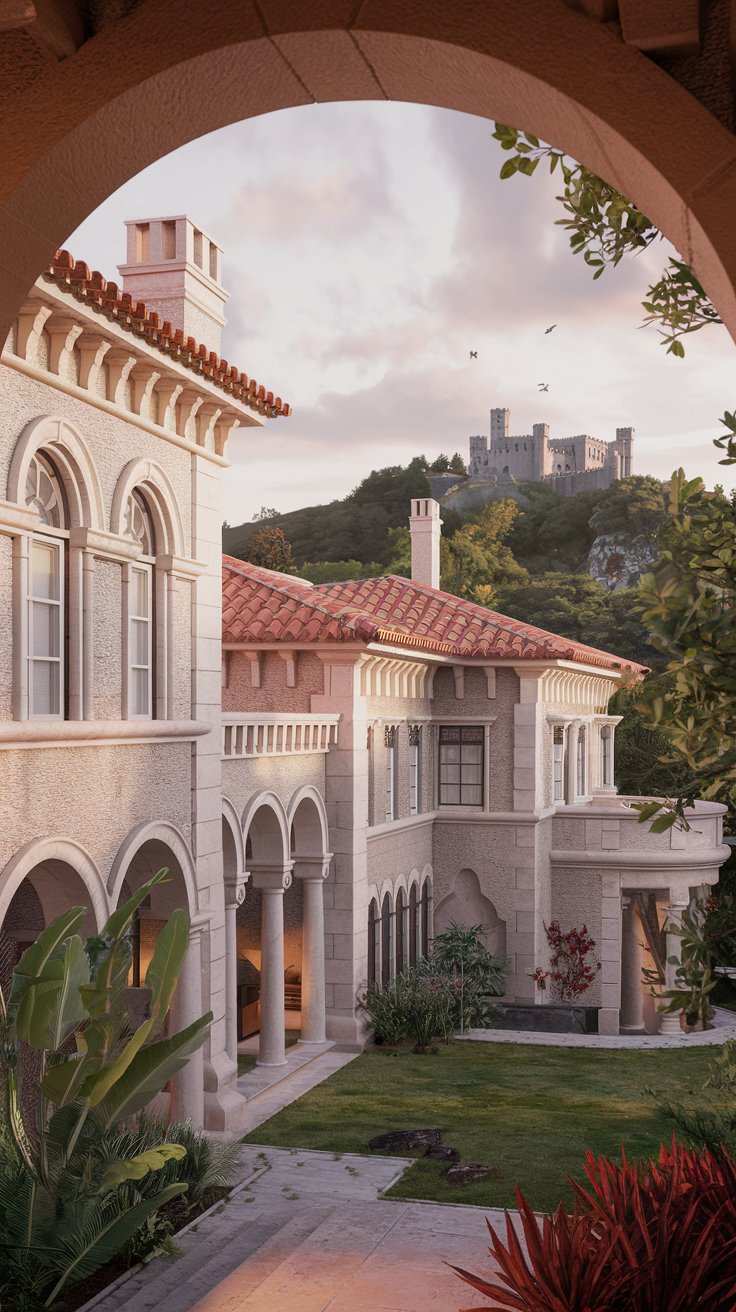
Sintra is a dream. Castles on hills that look like they’re made of candy (pink and green and bright, like a kid’s drawing), gardens that feel like jungles (so many green plants, I couldn’t name half of them—big leaves, tiny flowers, vines that hang down like curtains), and stone villas that look like they’re made of magic. You half expect a fairy to flutter out of a window when you walk by.
I wandered through one’s garden on a late afternoon—sunlight golden, turning everything it touched to honey. The jasmine scent was so strong it made me dizzy (in a good way, like being wrapped in a floral blanket that smells better than any perfume). I sneezed once, and a gardener who was trimming a bush looked over and smiled. His hands were dirty from the plants, but he still handed me a tissue from his pocket—folded neatly, like he kept them just in case. He said something in Portuguese. I didn’t understand, but I nodded and said “obrigado.” He laughed, and went back to trimming. That’s the thing about Sintra—it’s not just pretty. It’s kind.
I plucked a small jasmine bloom and put it behind my ear. It stayed there until I got back to my car. Every time I touched it, I smiled. A little kid pointed at it and said “bonito” (pretty), and her mom laughed and apologized—but I told her it was okay. It made my day.
The villa’s walls are light beige granite, warm in the sun, with arched doorways and windows that look like they’re smiling—soft curves, no sharp edges. The terracotta roof matches the sunset—orange and pink, soft, like someone painted the sky and the roof at the same time. And in the distance? Pena Palace, all pink and green, sitting on a hilltop like a fairy tale come to life. I took a photo, but it looked fake—like I’d edited it. But it was real. Sintra’s just that pretty. I kept taking photos, even though I knew none of them would do it justice. My camera roll’s still full of them.
I kept thinking, “How do people even live in places this pretty?” Do they wake up every morning, look out the window, and go “wow”? Or do they get used to it? I hope they never get used to it. I hope every morning they pause, even for a second, and think about how lucky they are. I know I would.
These villas are sophisticated. They blend stone with colorful tiles (I saw some with blue and yellow patterns, like little sunflowers) with exotic plants (there was a palm tree that was taller than the house—how does that even grow here?) with fountains that gurgle softly, like they’re singing. They’re full of stories: of Portuguese explorers coming home with tales of far-off lands (India, Africa, places I’d only read about in books), of poets writing verses in the gardens (pen in hand, notebook on a stone bench, sunlight on their pages), of families celebrating birthdays and weddings (tables set with white linens, flowers everywhere, music playing— I passed a wedding there, and the bride was wearing a white dress that looked like it was made of lace and sunlight). They’re not just houses. They’re works of art.
I got lost in the garden for a bit—followed the jasmine, like a kid following a trail of candy. The gardener smiled and pointed me back to the path. I thanked him again, and he waved. I left with jasmine stuck in my hair and a heart that felt light. Like I’d left a little piece of my worry there, in that garden.
10. The Ancient Ruin of Great Zimbabwe, Zimbabwe
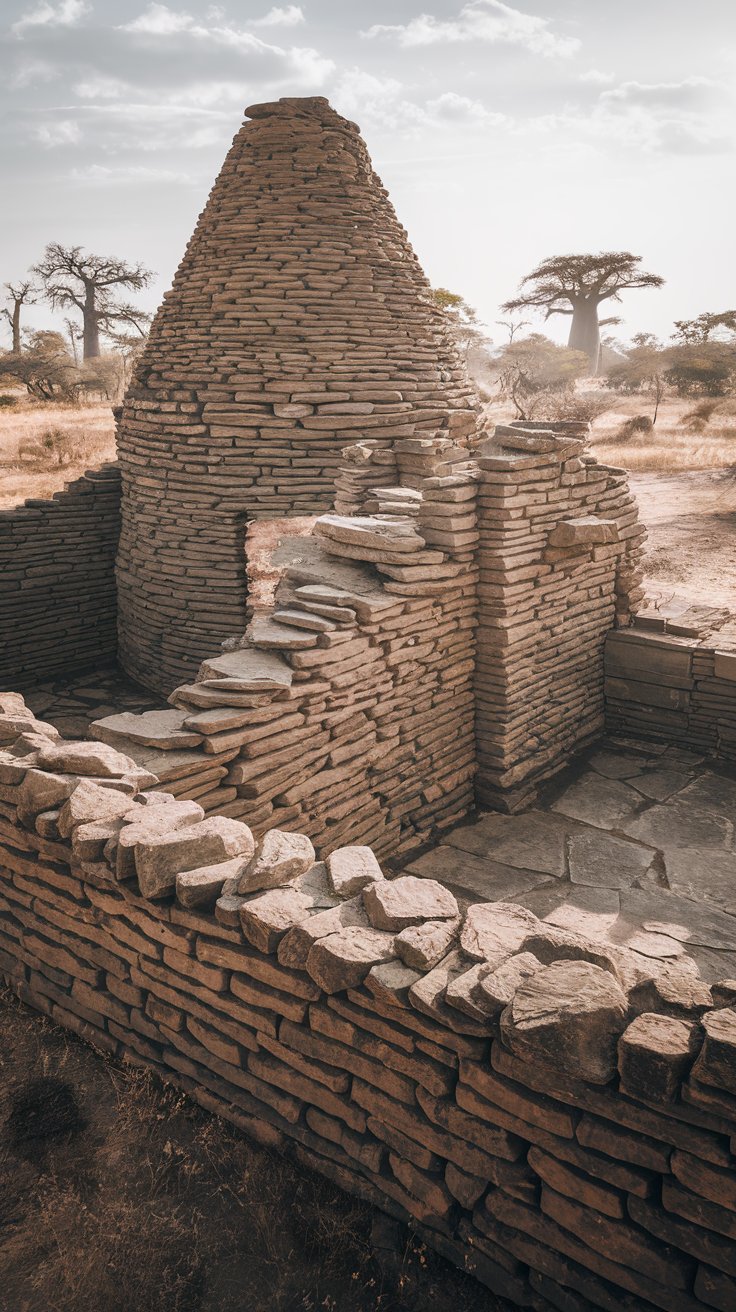
Our journey ends here—not with a house, but with a ruin. But oh, what a ruin. Great Zimbabwe isn’t just a pile of stones. It’s a whole ancient city, built entirely of dry-stacked granite (no mortar, no cement—just stones stacked so carefully, so perfectly, they’ve stood for centuries). That blows my mind. No glue, no nails. Just skill. Just people who knew what they were doing, who wanted to build something that would last.
I walked through it on a hot day, the sun beating down so hard I had to sip water every five minutes (I forgot my hat—big mistake. My ears got sunburned, and they hurt for days; my friend teased me about looking like a tomato). I felt tiny. The walls are tall, imposing, and the conical tower? It’s like a fingerprint of the civilization that built it—a powerful kingdom that thrived here years ago, trading with places as far as China and India. Can you imagine? Ships sailing across the ocean, carrying goods from this little corner of the world to places thousands of miles away. A guide told me they found Chinese porcelain here once—mind-blowing.
The stones are weathered, sure—scratched by wind, faded by sun—but they still feel strong. Like they’re proud to tell their story. Like they’re not ready to be forgotten. I ran my finger along a crack in the wall, and the stone was warm from the sun. I wondered if anyone else had stopped there and done the same thing, centuries ago. A farmer? A child? A king? I like to think it was a kid, curious about the world, just like me.
I thought about the people who built this. What were their names? What did they dream about? Did they know their city would still be standing hundreds of years later? I hope they did. I hope they knew they were building something that would outlast them, something that would make people like me travel halfway around the world to see it.
A guide told me that kids used to play hide-and-seek among the walls a hundred years ago. I smiled, thinking about how some things never change—kids still love hiding, no matter the century. I could almost see them, darting between the stones, laughing so loud it echoed. I even hid behind a wall for a minute, just to feel it. It was silly, but it made me happy.
Standing there, I thought about how much history is in those stones. About the markets that were here (merchants selling spices, cloth, jewelry, their voices loud and lively), the families that lived here (kids playing in the streets, parents cooking over fires, the smell of stew filling the air), the leaders that ruled here (making decisions that shaped a kingdom). It’s not a house. It’s a reminder: Stone doesn’t just last. It remembers. And sometimes, the best stories aren’t in the pretty cottages or grand manors. They’re in the ruins that refuse to be forgotten. They’re in the stones that keep talking, even when everyone else has stopped listening.
We started with a tiny Cotswolds cottage—pink roses, honey stone, a grandma’s smile—and ended with a ruin that tells an entire civilization’s story. That’s the magic of stone houses—they’re all different, but they all do the same thing: They connect us to the past. They don’t just stand there. They reach out. They say, “You’re not alone. People were here before you. They laughed. They loved. They built. And you’re part of that, too.”
Every one of these places? It’s not just walls and roofs. It’s the sound of kids laughing so hard they snort. It’s the smell of bread baking, so good you’d walk through snow to get a slice. It’s the warmth of a fire on a cold night, the kind that makes your toes tingle. When you stand in front of them, you’re not just looking at a building. You’re touching a piece of someone’s life. A piece of someone’s heart.
I hope this makes you want to go find one—maybe a little stone cabin in the mountains, where the snow falls soft and the fire crackles. Or a villa in Sintra, where jasmine smells like a dream. Or even a ruin, where the stones whisper stories of kings and queens. Stand there. Breathe. Listen. The stones will tell you everything. You just have to be quiet enough to hear.
And hey—if you do go? Bring a jacket. Even if you don’t think you need it. Trust me. I’ve made that mistake enough times.
上一篇
12 Breathtaking Jaguar Photos That Capture Nature's Majesty (You Have to See #9!)
下一篇
10 Adorable DIY Easter Wreaths That'll Bring Spring Inside Your Home!
Loading...
